Costa Rica Reforestation & Biodiversity - An Inspiration
Around half a million species are known to live there, which is equal to about 5% of the estimated species on Earth.
Considering Costa Rica only makes up 0.03% of the world's landmass, this showcases the remarkable biodiversity of such a small country.
Ever since I started this project I have taken inspiration from many tree planting, biodiversity and rewilding schemes. I decided to visit Costa Rica for a holiday recently and to see for myself what a country that has decided to preserve its forests and biodiversity looks like close up. I am still reading about their political regime and how they came to decide to become ‘carbon net negative’ and I am sure there are controversies and debates about the pros and cons of their approach which I am not aware of. I have found many inspiring stories of how individuals, groups and the nation has made changes and I thought I would try and describe some of those here.
- Costa Rica is 8º-10º north of the equator in between Panama and Niguaragua. It achieved independence after a civil war in 1949. It decided to disband its army and invest in a civil police force, education, health and social care.
- Costa Rica is probably best known for its sloths which I came across time and again as I travelled around. They have 4 types of monkey (howler, spider, white faced and squirrel) and I saw signs of jaguar and puma. It has a small area of primary rain forest ie that which has never been clearer and has created national parks to support the recovery of areas used for logging and farming which are now mature secondary rain forests with a total of 60% forestation. Below are a selection of wildlife I encountered.
I’ve drawn on a range of online resources and also information shared with various guides and Costa Ricans I met. There is an interesting article ‘How Costa Rica Reversed Deforestation and Became an Environmental Model’ https://earth.org/how-costa-rica-reversed-deforestation/ which summarises the ‘official’ story well.
A recent WWF publication reveals global wildlife populations have plummeted by 69% on average since 1970 https://livingplanet.panda.org/en-GB/. The loss of natural habitat and biodiversity is a world wide problem. Out of curiosity I have compared 5 countries - the UK, Costa Rica, Ireland, Finland & Guatemala for some key indicators of biodiversity and land use. One major differences between Costa Rica and the UK is population size compared to the size of the country. I was curious whether other Northern European countries with more similar population sizes to Costa Rica were different to the UK in terms of forestation and biodiversity. Basic statistics from https://www.worldatlas.com/maps/costa-rica
|
|
UK |
Costa Rica |
Ireland |
Finland |
Guatemala |
|
Size square kilometres |
240,500 |
51,060 |
68,883 |
303,815 |
107,159 |
|
Population million |
66.8 |
4.9 |
5 |
5.5 |
16.6 |
|
Square meters each |
3.6 |
10.4 |
13.8 |
55.2 |
6.5 |
|
GDP |
$42.3k |
$16.1k |
$69.4k |
$40.6k |
$4.6k |
|
Forestation |
13% Recovered from 5.2% in 1905; |
60% Before logging 75%; reduced to 40% by 1987 |
11% Recovered from 1% 1905 |
72.4% |
36.3% 1990-2005 lost 17% of forests and this is continuing |
|
Biodiversity intactness index 2020 * |
42% |
65% |
40% |
95% |
58% |
|
Crops usage 2020 * |
25% |
12% |
18% |
8% |
22 |
I am not going to draw any simple conclusions from this table but I have found it interesting to research different countries. It will take concerted effort to address the plummeting worldwide wildlife population and considering it from the perspective of different countries has been interesting. Finland has by far the largest amout of space per person. The UK is smaller (79% the size) than Finland which has just 12% of the population of the UK - so there is plenty of room for forests.
If Costa Rica had the same population density as the UK it would have nearly 3 times the number of people living there than they do. Looking at the level of forestation, biodiversity intactness index and the percentage of land used for crops does illuminate different decisions that have been made by different nations notwithstanding the differences in population and size of country. The dairy farming I witnessed in Costa Rica was at a smaller scale than that in the UK and Ireland.
I have chosen statistics which give actuals rather than directions of travel. The UKs ambition is to increase afforestation to 16.5% from 13% by 2050. At first sight this does not look ambitious. This is however, over twice the rate of increase since 1970 and the target will be legally binding once the Environment Act is passed as a law in 2023. More startlingly, this target will increase the forestation of the UK beyond the level of 15% recorded in 1086! It does not feel enough with the challenges we face in the world. Costa Rica were at the point of having lost 50% of their forests in 1987 compared to the 1940’s, when they took concerted effort to stop the reduction in forestation by ceasing logging and then reverse the decline through a range of measures including reducing crops such as cocoa, bamboo, cane sugar and dairy and through the creation of many national parks. People do not live in Costa Rican national parks and farming and hunting are banned. This is a very different model to the UK where there is intensive farming in our national parks, pheasant rearing (which threatens our two native snakes - adders and grass snakes) and shooting is allowed and the landscape is managed for people more than for wildlife. Land has been cleared in the UK since before the Romans invaded; logging to support our navy from the 16th onwards had a devastating impact on our forests. Ireland were down to 1% early in the 20th century when they started to make a change. Finland comes out as a shining example of stability with the highest forestation in Europe and have continued to treasure their biodiversity and wilderness. I met a Finish woman on my travels in Costa Rica and she explained that it is every Finish person’s right to go into the forest, walk, gather fruit and camp wild. It got me thinking about the differences in countries (with the recent decision made in the UK courts concerning camping wild on Dartmoor and the ambiguity of our access rights particularly in England). I may make Finland a future destination for my travels.
I have included Guatemala as a Central American comparator with a less positive story. It has a large population and a very low GDP per capita and poor governance. I was told by my guide that the resplendent quetzal, an incredibly rare forest bird, is the national bird of Guatemala. Guatemalans visit Costa Rica specifically to see this bird in the wild and often cry when they see it knowing that it is almost extinct back home due to the deforestation and lack of prioritisation of biodiversity in their country.
In Great Britain we have hunted many animals to extinction https://www.wildlifetrusts.org/extinct-british-wildlife including the lynx, wolf, elk and brown bear. Losing these animals at the top of the food chain means that our ecosystem is out of balance. Squirrels and deer are pests and a threat to rewilding. The white bottomed deer is the national animal of Costa Rica and when the guide found squirrels and deer he was as enthusiastic as when showing us monkeys, sloths and caiman as they are all part of the rich biodiversity. He was perplexed when British people explained that deer and squirrel populations need to be managed in the UK to protect saplings and young trees. Red deer are the largest mammals in Britain and have no natural predators.
Squirrel White tailed deer the national animal
The main driver of the positive biodiversity in Costa Rica is their plant life. The trees in the cloud forests host epiphytes, orchids, ferns. One statistic I was given was that one tree holds a greater range of plants than an area 10m x 10m on the forest floor.
Orchids
I am familiar with how trees compete for sunlight by bending around other plants blocking the way - this silver birch in my wood had been surrounded by gorse and has found its way to the light by adjusting the direction of the trunk to present the leaves to the optimal light levels.
Until visiting Costa Rica I had not heard of trees that move their roots into a place that gives the leaves better access to sunlight. The walking palm does just this. It grows straight up very quickly so that the leaves reach the light at the top of the canopy and it can start to make energy from the leaves. Should a better position be say to the north, then it will drop a root down from the trunk which will reach the ground and burrow into form a new root and this pulls the tree in that direction. I find that quite an inspiring thought in itself! The ability to move one’s roots as well as bend to meet the conditions planted in.
Walking palms with new roots added to move / walk the tree to an optimal position for sunlight
How Cost Rica changed the story of deforestation in 20th century
‘Monetary Incentives: The Driving Force for Environmental Compliance
Costa Rica’s success was driven by economics. The combination of a ban on deforestation with the introduction of PES - which pays farmers to protect watersheds, conserve biodiversity or mitigate carbon dioxide emissions- is the reason for success.
“We have learned that the pocket is the quickest way to get to the heart,” says Carlos Manuel Rodríguez, Costa Rica’s minister for environment and energy, acknowledging that people are more likely to care for the environment if provided with an income - a sad yet harsh truth behind environmentally friendly behaviours and monetary incentives.’
https://earth.org/how-costa-rica-reversed-deforestation/
The headline story is one of a state using its resources to prioritise reforestation and biodiversity and I have read that the source of funds is levying taxes on the oil industry.
Our guides told us tales of individuals prompting change in Costa Rica. For example in - Tortuguero on the north Caribbean Coast near Nicuragua, local people made their money from logging and catching turtles for meat in the 1960's. They have changed to become a thriving eco tourism destination with employment for local people as guides, in hospitality, transport, research and conservation. Our guide told us than a man from Florida visited this area in the 1960’s and was struck by both the amazing biodiversity there and the alarming rapidity with which this was disappearing and he persuaded the local people that they could make more money long term through eco tourism and this has slowly worked. Costa Rica’s first national park Tortuguero, was created here in 1975.
On the edge of the national park bananas are grown and the forest has been cleared. This is what the national park would have looked like before the 1970's.
The juxtaposition of national parks and towns where people live, shop and work and I was lucky enough to witness this amazing event - this is a female sloth with her baby on her tummy moving along the power lines during torrential rain on Christmas Day. I was in a restaurant on the other side of the road when this occurred.
Valuing biodiversity and the forest appears to be part of the Costa Rican way of life and a willingness to be influenced by visitors who valued their special land more than the local people did in the 1970’s and 1980’s. Costa Rican money includes pictures of animals and trees and the approach of valuing wildlife appears to be accepted by the population at large and built into the Costa Rican way of life.
Costa Ricans I spoke to were proud of what their country has achieve. Arguably I met people working in hospitality and eco tourism who would value these decisions made. I am conscious from the table above the GDP per head of Costa Rica is considerably lower than the European comparators. Has conservation levied a price on the population? Guatemala and other Central American neighbours are rapidly losing their rainforests and biodiversity and experiencing greater poverty. Costa Rica is a special case for many reasons and it was very rewarding spending time there.
Apart from the creation of national parks and incentives for farmers to preserve land and water quality, I noticed an innovation that could transfer to other countries. Due to termites wooden fence posts need to be replaced frequently. An alternative is concrete but these are expensive. The Costa Ricans have come up with a wonderful solution - use trees as fence posts and use fence wire in the usual way.
Trees here are living fence posts - sequestering carbon
Dairy farming is also important in Costa Rica and has been the cause of forest clearance. Through subsidy cattle farms are relatively small and what is noticeable is that land is not completely cleared and trees are left. These provide shade for the cattle but also mean that insects birds and other animals also live in these areas.
I visited a dairy farm with 15 head of cattle who were hand milked with minimal mechanisation. The milk was used to make cheese in one little parlour by the woman who owned the land with help from her family. This was then delivered to local hotels and restaurants.
Personal reflections:
This cartoon has guided my thinking for a while:-
What is the UK Government doing to protect forestation and promote biodiversity?
The Environment Act does appear to be a step in the right direction. But then today I went for a walk in the South Lakes and here are some photos.
Above are some tree plantations in the Blawith Fells; below is the OS map of the area showing the green area and trees where these are located ie very small percentage of the land.
Are Communities of like minded people working together?
Creating communities of like minded people working together is a positive way forward. I work with others (South Lakes Woodlanders, Woodland Trust, Cumbria Wildlife Trust, National Trust) and I am linking with the Lake District National Park and the Landowners of Crosthwaite and Lyth a charity based in Crosthwaite Village where my land is.
I have recently joined the UK organisation Vegan Land Movement https://globalvegancrowdfunder.org/ and the international organisation Tree Sisters https://treesisters.org/ and through these schemes communities of individuals are developing. Maybe these can stretch the UK government target of 16% forestation to something greater than that.
I want to learn more about these groups :-
Reforestation Charity https://www.reforestation.org.uk/
Rewilding Britain https://www.rewildingbritain.org.uk/news-and-views/research-and-reports/reforesting-britain
I have visited Carrifan in Scotland which is a major rewilding project prompted by there be the last solitary tree in this Scottish Valley. The charity is nearly half way to planting a million trees.https://www.rewildingbritain.org.uk/rewilding-projects/reviving-the-wild-heart-of-southern-scotland
Acting alone - still worth the effort....
As the cartoon says this will be too small but I am meeting people who are working to make a difference whether it is on their own land or roadside verges and shared spaces. Promoting biodiversity on any piece of land, one square meter at a time, is something we can all do and here are two inspirational local schemes:
Wild flower corridor in Grange over Sands developed by Fiona Hanlon https://cumbriacrack.com/2021/11/19/residents-create-vital-green-wildlife-corridor/
Get Coniston Buzzing which I heard about from local resident Tracy Coward https://www.lakedistrictfoundation.org/a-bed-for-bees-2/
On a personal level I was anxious about my decision to visit Costa Rica as it blew my personal target for my carbon footprint by flying long haul for the first time in 6 years. In that time I have worked to reduce my carbon footprint. I have installed solar panels, replaced my internal combustion engine car with an electric vehicle, followed a vegan lifestyle (food, clothes and gardening) and purchased land to plant over 4,000 trees to sequester carbon and promote biodiversity. I am now clear that without ecotourism Costa Rica would not be achieving the sustainable improvements that is has done and that they would not be able to afford to continue to prioritise their forests over crops. I thought this was ‘greenwashing’ before I left home but have seen the impact of stopping planting bamboo and the impact of continuing to plant bananas and palm trees up close. I am pleased to have been part of supporting this country to make the change.
While Costa Ricans showed considerable pride in their country, I was struck by there not being a strong personal movement eg. veganism is not recognised as widely as it is in the UK; hardly anyone cycles and traffic is becoming an increasing problem; recycling is ad hoc. While big crop production is industrialised eg banana, cane sugar and palm oil, dairy farms remain on a small scale and there is a strong organic movement. Individuals such as drivers, guides and family members of a hotel owner talked to me passionately about their own small holdings. One is planting avocados on land previously used for cattle rearing. Another is growing bananas using organic methods and is looking forward to his first crop later this year, It was explained to me that living in flats is not seen as acceptable as everyone wants their own piece of land to grow things. Many people I met talked about the need to be aware of the cycle of the moon to guide planting - this was so for individuals looking after their gardens and those that grew coffee for export. This felt like an example of people being connected to the natural world. So while the major initiatives have been run at a national scale, these schemes resonate with people and their daily lives.
By keeping on making the case for protecting and valuing our land and demonstrating that we are willing for our country to make changes to protect our precious biodiversity and to contribute to protecting our planet in the long term, we may promote change nationally. Personal action and working as communities of like minded people can be a powerful driver for change - I hope.
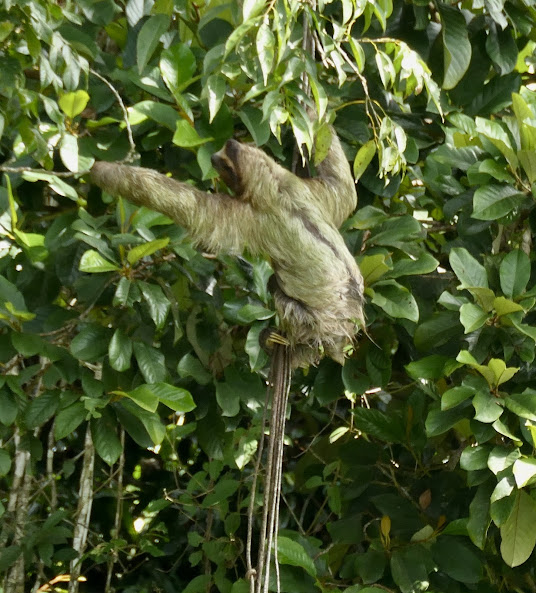



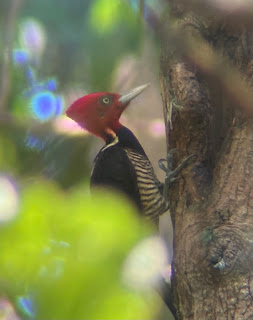



























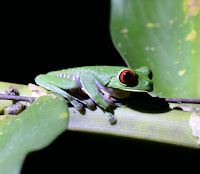





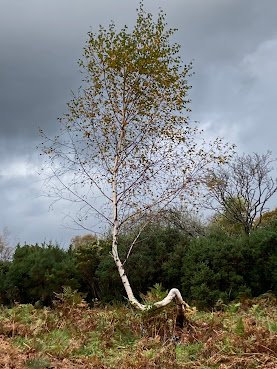





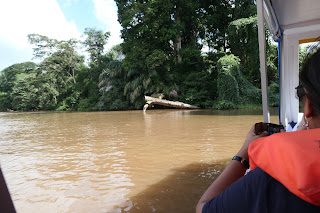



























Fascinating stuff. I love the way you just let the observations & data speak for themselves.
ReplyDelete(Ireland 1905: 1%… that's astonishing)
µ
Yes I found researching it fascinating and I changed my view in subtle ways as I looked at the data so it is less coherent than I had anticipated - my conclusion is 'it's complicated!' - oh and I need to visit Finland 😀
ReplyDeleteA great blog.
ReplyDeleteA couple of things that hit home for me were the following...
In Tortuguero approx 80% of people are Nicaraguan because education has caused young people to leave to seek a 'better' life according to our guide (including his own children).
In Monteverde 30 years ago the town of Santa Elena was in cloud. Not anymore as temperatures have warmed. They reckon another 30 years the cloud forest will no longer be in cloud.